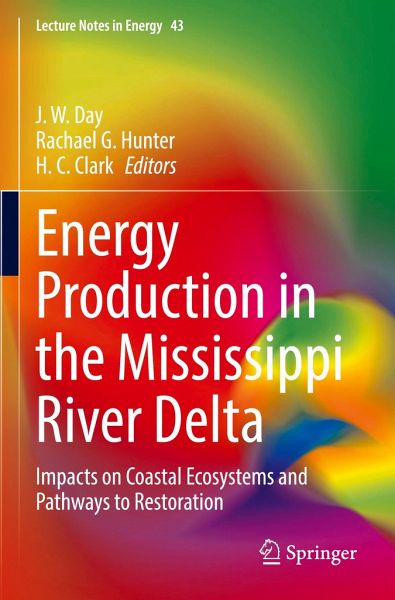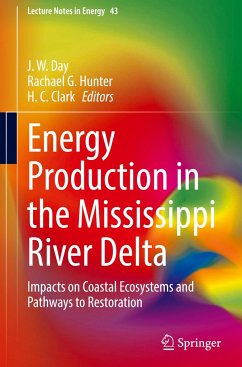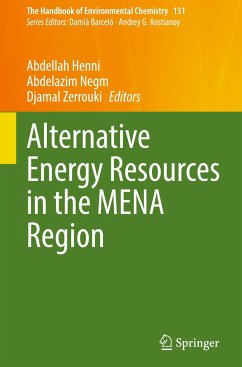
Energy Production in the Mississippi River Delta
Impacts on Coastal Ecosystems and Pathways to Restoration
Herausgegeben: Day, J. W.; Hunter, R. G.; Clark, H. C.
Versandkostenfrei!
Versandfertig in 6-10 Tagen
68,99 €
inkl. MwSt.

PAYBACK Punkte
34 °P sammeln!
For nearly a century, the energy industry had a profound impact on the Mississippi Delta, including both the natural and socio-economic systems. The purpose of this book is to describe the delta, how oil and gas (O&G) activities have impacted both natural and socio-economic systems and how much of the degradation could have been avoided. The Mississippi Delta formed over the past six thousand years but, in less than a century, lost 25 percent of coastal wetlands. O&G activities contributed significantly to this loss. O&G production began in the early 20th century and over 600 conventional fiel...
For nearly a century, the energy industry had a profound impact on the Mississippi Delta, including both the natural and socio-economic systems. The purpose of this book is to describe the delta, how oil and gas (O&G) activities have impacted both natural and socio-economic systems and how much of the degradation could have been avoided. The Mississippi Delta formed over the past six thousand years but, in less than a century, lost 25 percent of coastal wetlands. O&G activities contributed significantly to this loss. O&G production began in the early 20th century and over 600 conventional fields were developed. Production ramped up rapidly, peaking around 1970, then declined. As O&G production declines, produced water dominates fluid production, and this high salinity brine is laced with a variety of toxins. Often, O&G was produced rapidly and much was left in the ground and is now technically and economically unavailable. With careful planning,this situation could have been avoided. The industry also affected the regulatory framework by weakening regulations, enforcement and impacts were not adequately addressed, and more profits flowed out of state. Thus, the state was economically and environmentally worse off. The industry should be compelled to contribute expertise and financial resources to restoration of the delta.














